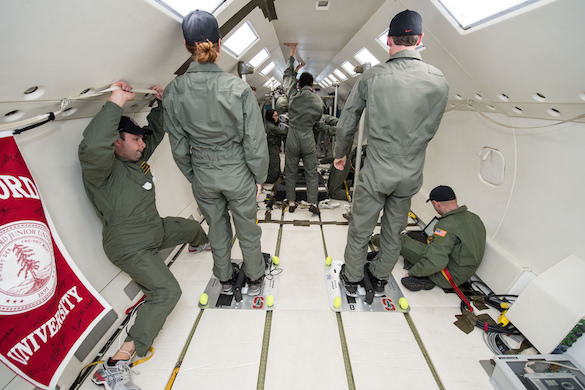Noninvasive Hemodynamic Monitoring in Microgravity, Phase II (Arterial Stiffness)
PI: Gregory Kovacs, H. Craig Heller (Co-I), Stanford University
PI: Gregory Kovacs, H. Craig Heller (Co-I), Stanford University

- TA06 Human Health, Life Support and Habitation Systems
This flight campaign is expected to lead to the following maturation steps: (1) Successful recordings of scale-based PWV in microgravity, (2) Successful collection of ground and microgravity PWV measurements using the same device, and (3) Validation of the relationship between ground-based and microgravity-based measurements.
NASA, for preventive monitoring and titration of countermeasures in space. Healthcare providers, for ground-based cardiovascular risk assessments.
To quantify PWV, the timings of central artery pulsations are measured using a (1) microgravitytested BCG weighing scale attached to the airframe, and an (2) ankle-worn photoplethysmograph (PPG) sensor. Test subjects are rigidly coupled to the scale using modified snowboard bindings (Fig 2). Data is streamed to a laptop for visualization, as well as logged locally.
Technology Details
-
Selection DateAFO8 (Apr 2014)
-
Program StatusCompleted
- 1 Parabolic
Development Team
-
PIGregory Kovacs
-
PI Organization
-
Co-IH. Craig Heller
-
Co-I Organization
-
SponsorStanford

